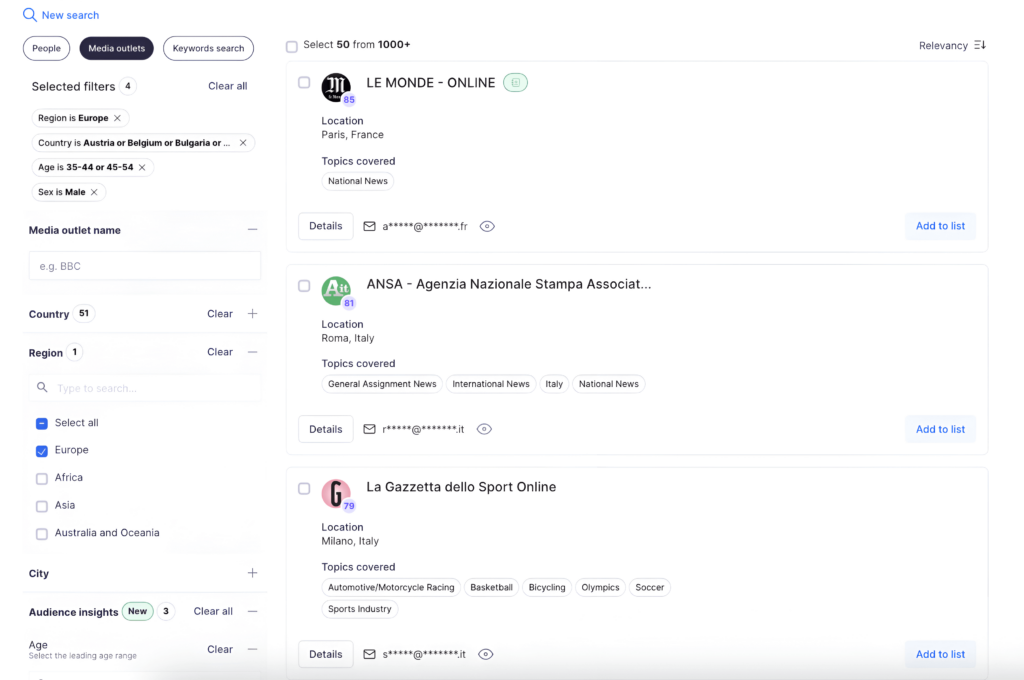If you think about it, creating and constantly updating media lists can be classified as a “Sisyphean Task.” After all, building a solid list is perhaps one of your most valuable assets, but it requires never-ending updates, improvements, adjustments, and so on.
You know you spend a lot of time on it, but it’s never enough. New outlets? Sure. Twenty-seven new headlines in the past fifteen minutes? Normal. And now that tweets (or X’s – I’m not sure here, and I don’t think anyone really is) aren’t as popular, you’re scanning the darkest corners of the internet in search of the perfect media contact.
With an influx of information, it feels like you’re spending more time on research and barely have any time to write. Given the current state of PR, that’s understandable. So, instead of pushing the old agenda, we thought of new ways for you to find the contacts you need and build relationships that will give you the coverage your boss wants.
Prowly has partnered with Semrush to provide you with important data about online media outlets that you can’t find in any other PR tools. Since the line between marketing and public relations is becoming more blurred than ever, this partnership was a natural progression.
Additionally, there’s a second exciting update—AI keyword search in articles, where you can find more ideal words to find the journalists who are currently writing about your topic.
Target journalists using Audience Analytics
Whenever you launch a new product, you’d probably search the database through topics and countries, then look for data about their popularity and whether they’re a fit. However, to get the necessary information, you need to scroll through several topics and then compile your own list.
Creating a new media list involves much more than just compiling a list of email addresses. It begins with identifying which outlets are relevant to your client’s industry and audience. Then, you need to determine which ones are your top media choice, and which ones should receive extra attention.
For example, is your need to appear in Tier 1 media driven by the CEO’s desire to be featured in Business Insider? Or is it based on the actual impact these outlets have on brand awareness among potential clients? Keep in mind that balancing these considerations is key to crafting an effective media strategy.
That approach not only requires a lot of effort but also takes up a lot of time. It’s not a bad one per se, but it has its downsides, such as lost coverage opportunities if relevant outlets remain undiscovered. And let’s face it—without proper tools, it’s nearly impossible to conduct great market research.
You can, however, approach it differently with Prowly’s audience analytics. You look for a target group by setting up a filter to find those who match the potential customer profile or set up traffic metrics as a filter, so you can identify the most popular outlets that will increase your brand visibility as a result.
Sample use case #1: New cookbook launch
Imagine: your client is coming out with a new cookbook about quick, healthy meals. Therefore, you want to find blogs that cover stories related to food and are particularly popular among women aged 25-44 from the USA.
To do so, go to the Media outlets tab and use relevant filters. Then, sort the results according to the influence score (which also includes the number of social media followers the outlet has) so that your results are arranged from most popular to least.
Sample use case #2: New clothing brand for men
Similarly to the above use case, you can search through the database for specific online outlets. Let’s say your client is launching in Europe a clothing line for men and knows those who will be most interested are over 35.
To find outlets that match these requirements, go to the Media outlets tab and use the region, topic, age, and sex filter.

Using AI to search for journalists (the smart way)
Let’s say you work at an agency, and you have a client who is selling smartwatches in the US. Naturally, you’d probably check out some journalists who write about technology. While that approach might be effective in some cases, it won’t work for detailed announcements. It’s like only seeing the tip of the iceberg, while the most relevant contacts remain under the radar.
The alternative? Go to the “Keyword search” tab and type in a keyword. In this example, start with “smartwatch.” You’ll instantly get AI suggestions for related keywords that might add a twist to your pitch or simply be relevant to the angle of your story.
Then, you can narrow down your search by checking articles, tweets, or both. You can further filter your results by looking at contacts who posted about this topic within a particular time frame or people who are only in a certain market (in this case, the USA).
As a cherry on top, you can see how often a particular journalist uses that keyword in their articles. You never know, maybe you’ve found a group of people who only write about smartwatches.
Refine your approach for better success
Creating and expanding media lists is an overwhelming task on its own, but there’s always room for improvement in terms of results and workflow. With the new technology available, you can now make it easier to find journalists and build relationships with highly targeted contacts. Think of it this way—you don’t need to change what you’re doing completely, just make small updates that bloom into huge differences.

